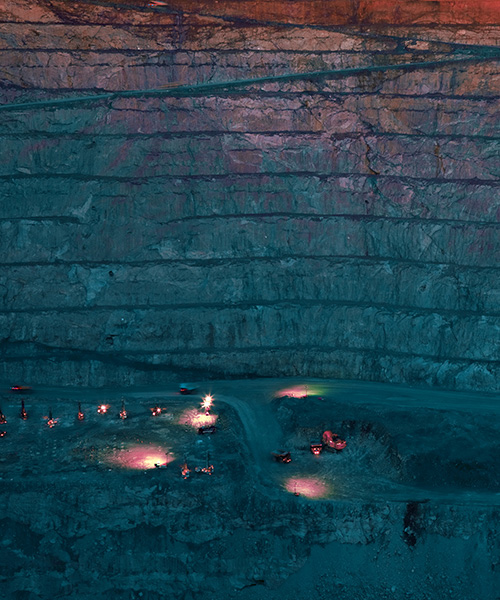January 03, 2024 • 4 min read
What trends will define the mining industry in 2024?
Nick Bell discusses the key opportunities and obstacles that will shape the global mining landscape this year.

“I see mining entering a critical phase where retaining trust in the business case of mining projects will be challenging,” says Nick Bell, Global Sector Lead, Mining, Minerals and Metals.
“2024 will be a year of reinvention for many miners, as they diversify into critical minerals. The decisions they make over the next 12 months will affect their trajectory, and whether projected supply-demand imbalances narrow or widen over time.”
So, what trends does Bell expect to see in the mining industry in 2024?
A multi speed mining economy will become more obvious
Miners will all experience industry challenges – including rapidly escalating capital costs, a skills shortage, elongated project schedules, and subdued commodity prices – but their ability to handle these challenges will vary. Bell explains why.
“The next few years will be tricky for several reasons, including higher costs resulting from the scale and complexity of mines, extended infrastructure and decarbonization requirements of assets, geological challenges, and supply chain price volatility,” he says. “That’s why we’ll see a two or three speed economy evolve this year, as a select few miners power ahead to build additional production capacity in future facing commodities.”
Bell expects miners with strong cash reserves, particularly those with large iron ore, copper, or gold portfolios, to fare best. Free cash flow will enable them to navigate through the cycle, allowing these businesses to pivot their spending towards more copper and other energy transition metals.
“This strategic advantage positions them ahead of competitors, who will need to wait for their balance sheets to strengthen before building the required capacity,” says Bell.
“All miners now deploy capital with appropriate rigor. The middle speed however is made up of mostly mid-tier miners who will be obliged to adopt a particularly cautious approach to capital deployment. This may delay their pivot, widening the gap to the mining majors.”
Bell believes all operators will need to demonstrate the integrity of their approach to environmental, social and governance (ESG) considerations. They will need to invest in their operations responsibly, because buyers of metals will demand an audit trail which favours western miners who are practiced in this arena.
“Consolidation will also increase in the field, with a notable impact on juniors,” continues Bell. “These entities may be involved in acquisitions, opt to remain small, or even adopt survival strategies amid a more challenging trading and investment landscape.”
Miners of all different sizes will, however, face common ESG challenges.
Earning trust to deliver essential resources
It’s difficult to deliver minerals and metals to the market quickly. One reason for this is a lack of trust within the investment community and stakeholders in mining projects.
In a recent article, BlackRock cautioned that investor reluctance to engage with mining might reduce miners’ access to capital and delay the energy transition.
“This is a pressing challenge, especially considering the crucial role that mining plays in the energy transition and building renewable infrastructure, like EV batteries and wind turbines, and producing fertilizers for crops that are feeding the world,” explains Bell.
“Last year, copper production at large mines in Peru and Panama suffered cutbacks due to the loss of their social licence to operate. Furthermore, the inability to reach a consensus on a new constitution in Chile may reduce investor confidence, increasing the risk of resource nationalism. This is already happening in parts of Central America and Africa, where governments aim to assert greater control over critical mineral decision making.
“But there are things miners can do to rebuild confidence, starting in the next 12 months,” continues Bell. “And one of these actions is embracing new technologies at the mine site.”
Technologies that pave the way for transformation
This year, Bell expects to see heightened attention on broader ESG impacts throughout the mining and refining value chain.
![]()
There’s a consistent trend across every mining project: the need to be responsible with water. Any technology that can help reduce water consumption – and therefore use less energy to source it – is worth exploring.
Technology will also play a greater role in mining, processing, and refining critical minerals.
“As minerals move through the value chain into refined compounds and complex chemistries, there are technologies that can improve ESG, capex and opex outcomes,” says Bell.
“In 2024, operators will look to explore ways to improve their margins by moving into higher margin sustainable products, either through direct ownership or strategic partnerships in refining and processing technologies.
“This is already happening in the battery value chain, where major nickel and lithium producers are actively positioning themselves in the production of cathode materials for electric vehicle batteries.
“The winners will be those who swiftly embrace and adopt such technology,” says Bell.
Smoother sailing in the coming years
Bell believes that even with a trickier operating environment in 2024, there will be opportunities for miners to position for the forecasted commodity price uplift, when demand significantly outpaces supply. And that pivot, for many, begins this year.
“The industry’s prognosis is extremely healthy,” he says. “Demand for energy transition and battery materials will soar past supply in the next two to three years and beyond, creating opportunities we’ve never seen at this scale before.
“This year’s strategic investments in forward looking commodities – and actions to work with stakeholders to develop environmentally conscious operations – will pay off for decades to come.”





